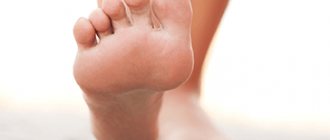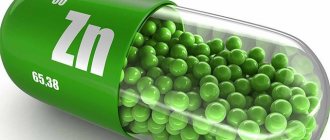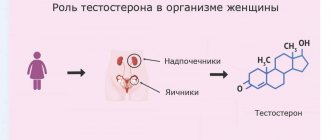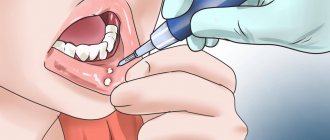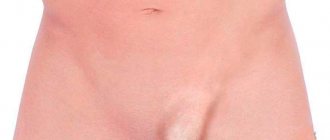Constipation is a very delicate problem. It is not customary to discuss it with friends and relatives. But according to statistics, about 15% of the world's inhabitants suffer from chronic defecation retention. Pathology not only causes discomfort, but also harms health.
Toxins present in feces penetrate into the blood and spread throughout the body. As a result, symptoms of intoxication appear. To avoid such complications, constipation should be treated without delay.
It is worth noting that chronic constipation is a functional disease. Diagnostics plays a special role in choosing the right treatment tactics, so it is often difficult to do without the help of a doctor, especially if we are talking about a serious defecation disorder.
In some cases, the causes of constipation are known to a person, and correction of the condition is not difficult; in others, treatment of the underlying pathology and special measures will be required. In the article we will look at the main causes of constipation and ways to get rid of the disease.
Constipation: definition and types
Constipation refers to difficult or incomplete bowel movements and lack of regular bowel movements. In adults and children over one year old, defecation normally occurs daily, 1–2 times a day. In some cases, the frequency of bowel movements is considered normal once every 2 days, but subject to painless, free, complete and regular bowel movements. For children under one year old, the frequency of stool can vary widely - from 1 time per day to the passage of stool after each feeding. The nature of bowel movements and the density of stool in infants depends mainly on the type of feeding (natural, mixed or artificial).
The following conditions are considered signs of constipation:
- stool retention (no bowel movements for 48 hours or more);
- less than 3 bowel movements per week;
- passage of hard feces;
- pain or difficulty during bowel movements (need to strain);
- a feeling of incomplete bowel movement after passing stool.
There are acute and chronic constipation. Acute ones occur one-time and more often have a clear connection with provoking factors (inadequacies in nutrition, violation of the drinking regime). Chronic constipation worries the patient regularly, and this diagnosis is made if the symptoms of constipation persist for 3 months.
Up to contents
Diagnostics
Adults with complaints of constipation are referred for examination to a gastroenterologist. The doctor collects anamnesis and provides a physical examination. The complex of mandatory diagnostic measures for defecation disorders includes modern instrumental methods for studying the gastrointestinal tract, clarifying laboratory methods. The most informative are:
- Irrigoscopy
. The double contrast method allows you to evaluate the anatomical and functional features of the large intestine, detects deformations of the intestinal contours, space-occupying formations and filling defects. For a detailed study of the digestive system, barium passage radiography is used. - Colonoscopy
. An endoscopic examination is designed to thoroughly examine the intestinal mucosa and detect diseases that manifest as constipation. During the study, a biopsy of the intestine is performed to clarify the causes of the disease. In the obtained biopsy samples, the cellular composition and the number of intramural nerve ganglia are assessed. - Sonography
. Ultrasound of the abdominal cavity is informative for the diagnosis of tumor neoplasms and adhesions. An ultrasound examination of the umbilical ring and the outer ring of the inguinal canal is recommended to exclude hernial protrusions or strangulation of intestinal loops. Women must undergo an ultrasound of the pelvic organs. - Coprogram
. The dry, hard consistency of feces, “sheep” or “pencil” feces, is determined macroscopically. Microscopic examination reveals an increased content of leukocytes and rotting products. An analysis of stool for helminth eggs, bacteriological culture, and the Gregersen reaction to detect occult blood are indicated. - Blood
tests . An advanced biochemical analysis is performed, measuring the concentration of glucose and electrolytes. It is necessary to establish the amount of free thyroxine and pituitary TSH. If glucose intolerance is impaired, an oral stress test is performed. To exclude chronic posthemorrhagic anemia, a clinical blood test is performed.
Causes
Constipation can be not only an independent disease, but also a symptom of a number of pathologies and conditions. The following are the main causes of constipation:
- Diseases of the gastrointestinal tract: chronic colitis, biliary dyskinesia, gastric ulcer, the presence of obstacles to the passage of feces (tumors, diverticula, etc.).
- Eating disorders: excess fatty foods, insufficient amount of coarse plant fiber in the diet, improper drinking regimen. Depending on the nature of the diet, constipation can be either acute (with single errors in the menu) or chronic.
- Low physical activity - intestinal motility and the speed of passage of feces through it depend on the general activity of the person. With a sedentary lifestyle, irregular bowel movements and difficulty defecating are much more common.
- Other reasons: pregnancy, psychological problems and stress (child entering kindergarten, school, etc.), high temperature (due to intense loss of fluid), taking certain medications, immaturity of the gastrointestinal tract in infants.
Up to contents
Prohibited Products
First of all, the intake of food that causes flatulence, fermentation and putrefactive processes in the intestines is limited. In addition, it should not irritate the stomach. For spastic constipation, it is prepared in the form of a puree. It is recommended to avoid eating viscous cereals and foods containing a lot of starch and tannin, due to their slow movement in the intestines. Avoid foods that “overstrain” the gallbladder, as they increase stress on the digestive tract and impair intestinal motility.
Avoid eating rice and pasta, which cause a fixing effect.
List of prohibited products:
- bananas;
- mushrooms;
- mayonnaise;
- alcohol;
- meat and fish of fatty varieties;
- garlic, radishes, turnips, onions;
- fried eggs;
- legumes (limited);
- flour dishes (especially fried pies, dumplings, dumplings);
- pastries from butter dough;
- blueberries, quince, dogwood;
- rice (in excess);
- smoked dishes, canned food;
- strong tea, coffee;
- chocolate, cream dishes;
- pepper, horseradish, mustard;
- jelly;
- jelly, marmalade, pastille;
- slimy porridge.
If for some reason it happened that prohibited products were consumed, measures must be taken to neutralize their fastening effect. You can use laxatives, do an enema, or include foods recommended for constipation in your diet. If you leave everything to chance, all efforts to eliminate the problem, which have been achieved for months, will come to naught.
Treatment
Both chronic and acute constipation must be treated to alleviate your condition and avoid complications.
Proper use of laxatives
Regardless of the reasons, treatment of constipation with stool retention for 3 days or more requires preliminary cleansing of the intestines.
For this purpose, the following are most often used:
- laxatives,
- suppositories with glycerin,
- cleansing enemas.
What to do if you have severe constipation? Taking laxatives by mouth (oral) helps very slowly and unpredictably. Moreover, unpleasant side effects may occur, such as increased gas formation, rumbling and cramping abdominal pain. But some oral medications are well suited for the complex treatment of chronic conditions and the prevention of constipation.
The best option for cleansing the intestines during acute, including long-term and severe, stool retention is the drug MICROLAX®, produced in the form of microenemas. Compared to oral laxatives, it can take 5–15 minutes to work1. Other advantages of MICROLAX® include a high safety profile when following the instructions for medical use of the drug (it has no age restrictions or special contraindications) and a convenient release form - microenemas in individual single-use packaging. With the help of MICROLAX® it is very easy to get rid of constipation at home - administering a microenema does not require special skills. It is enough to simply insert the tip into the rectum, after squeezing out a drop of MICROLAX® to lubricate the tip (for a child under 3 years of age, insert the tip only halfway, up to the mark on it, or use MICROLAX® for children) and completely squeeze out the contents of the tube, then remove the tip , still lightly squeezing the tube.
Severe constipation is a common occurrence in hospital patients, especially those who have undergone surgery, and in pregnant women during their stay in the maternity hospital. Problems with bowel movements can also occur on the road (long train trips, business trips). In such situations, MICROLAX® can also help you - it can be used in the postoperative period and during pregnancy, and thanks to its convenient format it is very simple.
MICROLAX® has no restrictions on the duration of use and is suitable for the treatment of chronic constipation. In this case, a complex treatment therapy must be selected by a doctor.
Compliance with diet and drinking regime
To normalize stool, the use of laxatives alone is not enough. Nutrition is of great importance. Activation of intestinal motility, softening of feces and growth of beneficial microflora is promoted by dietary fiber: pectin, lactulose and coarse plant fiber. They are found in large quantities in fresh vegetables, fruits, berries, and grain shells (whole flour, bran, muesli).
Including fermented milk products in the diet - low in fat and fresh, additionally enriched with representatives of normal intestinal microflora (lacto-, bifidobacteria) - helps to get rid of constipation.
To normalize stools, it is imperative to increase fluid intake, in the form of bottled or boiled water.
Increasing physical activity
Regular exercises - gymnastics, swimming, running - contribute to timely cleansing of the intestines.
Solving psychological problems
Psychological problems and stress are common causes of constipation. For a young child, a change of environment, including entering a kindergarten or school, will be stressful. Children are often embarrassed to go to a public toilet and systematically hold back their stool. As a result, the feces become denser, the ampulla of the rectum expands, which leads to painful bowel movements, which is why the child is increasingly afraid to go to the toilet and a vicious circle is formed. Failure to treat this condition in children can lead to the development of serious complications in the future, such as stool, megacolon, rectocele, etc.
In case of constipation in adults, nervous overstrain and chronic stress also play an important role, therefore, in case of chronic problems with stool, the help of a psychologist and training in relaxation techniques would be useful.
Normalization of the daily routine
A normal daily routine is not only about adequate sleep and rest. This also includes achieving regular, daily (and preferably at the same time) bowel movements. The formation of a bowel rhythm is helped by the use of MICROLAX® in the initial stages of treatment - the use of a microenema in the morning helps to develop and strengthen the habit of going to the toilet at this time of the day.
Treatment of the underlying disease
If any disease is the cause of constipation, then to eliminate problems with stool, you must first begin treatment. In case of organic pathology (tumor, diverticula, congenital intestinal anomalies), surgical intervention may be required.
Up to contents
Sample menu for the week
Before switching to laxative products, it is recommended that an adult undergo a cleansing enema with a volume of at least one liter. To prevent injury to the intestinal mucosa from hard feces, add 2-3 tablespoons of vegetable oil to the water. The water temperature should not differ from room temperature. After the procedure, you should start an anti-constipation diet. The daily diet menu can be varied by adhering to nutritional rules.
Monday
The first breakfast is boiled buckwheat with the addition of a tablespoon of bran, kefir with prunes.
Second breakfast - a decoction of dried apricots with steamed berries.
Lunch - fish soup with pearl barley, boiled beet salad with sour cream, yesterday's bran bread.
Dinner - chicken with stewed cabbage, dried fruit compote.
At night - yogurt.
Tuesday
The first breakfast is a salad of grated apple and carrots with honey, green tea with breadcrumbs.
Second breakfast - cottage cheese with chicory drink.
Lunch - beetroot soup with herbs, steamed cutlets with buckwheat porridge, fresh cucumber salad dressed with vegetable oil.
Dinner - millet porridge with pumpkin, dried fruit compote.
At night - curdled milk with diet bread.
Wednesday
First breakfast - oatmeal with honey, raisins, carrot juice.
Second breakfast - vegetable salad of tomatoes, mozzarella cheese with vegetable oil.
Lunch - vegetable soup with tomato juice, turkey stew with buckwheat porridge, rose hip decoction.
Dinner - vegetable hodgepodge of carrots, broccoli, potatoes, meatballs.
At night - kefir and prunes.
Thursday
First breakfast - cottage cheese casserole with apples, chicory drink.
Second breakfast - orange or apple.
Lunch - pureed pumpkin soup, stuffed peppers with meat, tomato juice.
Dinner - seafood salad, fish and potatoes baked in foil, green tea.
At night - kefir with crispbread.
Friday
First breakfast - oatmeal with fruit, kefir.
Second breakfast - apricot juice.
Lunch - fish soup with pearl barley, mashed potatoes, pumpkin juice.
Dinner: cabbage rolls, tea with honey.
At night - yogurt with crackers.
Saturday
First breakfast - millet porridge with pumpkin and raisins, kefir.
Second breakfast - fresh vegetable salad, compote.
Lunch - chicken soup, vinaigrette, carrot juice.
Dinner - boiled fish with pearl barley porridge, orange juice.
At night - prune infusion.
Sunday
First breakfast - cereal porridge with dried apricots and raisins, chicory drink.
Second breakfast - apple or orange.
Lunch - beetroot soup with meat broth, cottage cheese casserole, compote.
Dinner - chicken meatballs, boiled potatoes.
At night - yogurt with diet bread.
Constipation in children
If a child experiences constipation, especially chronic constipation, treatment should never be delayed. Prolonged bowel retention only aggravates the problem. The feces become dense and damage the intestinal mucosa, which leads to painful bowel movements - as a result, the child endures and deliberately avoids going to the toilet. Accumulating feces stretch the ampulla of the rectum, and encopresis (fecal incontinence) may subsequently form.
Parents are often interested in what to do if a child is constipated at 1 or 2 years old. The situation with stool retention in a newborn, one-month-old baby or infant becomes even more difficult for mothers and fathers. Young children are scared to use laxatives, especially since many of them are contraindicated at an early age.
To eliminate acute stool retention in a child from the neonatal period, MICROLAX® can be used: it has no age restrictions, and is also approved for infants. If constipation occurs, therapy should be supplemented with other measures - diet, increased fluid intake, increased physical activity.
For newborns and infants who receive only mother's milk, the diet must be followed by a nursing woman. When feeding with formulas, it is recommended to use special nutrition. Infants over 4 months of age need to introduce vegetable and fruit complementary foods in a timely manner.
Up to contents
What diet is recommended for older people?
In old age, constipation is persistent and is caused by impaired blood supply and innervation, leading to intestinal atony. A decrease in activity after a stroke or with decompensation of heart disease is also important.
In the clinical course, intoxication of the body with decay products (indole and skatole) is added.
To combat constipation it is recommended:
- follow a nutritional schedule, it activates enzyme systems and promotes digestion;
- eat vegetables and fruits daily, the most beneficial is vegetable fiber from apples, green peas, prunes, figs, raisins, nuts, pears;
- add a spoonful of bran and dried fruits to porridge;
- drink cold water on an empty stomach;
- if there are no stones in the gall bladder, then you can drink a tablespoon of vegetable oil for relief;
- Avoid sweets, replace sugar with xylitol.
Seafood is healthy, including seaweed salad. Diet alone cannot solve the problem of coprostasis; to avoid constipation, people should move, force themselves to do exercises, long walking helps. Proper nutrition and physical activity should be instilled from childhood. This will help the child avoid serious adult problems.
Constipation in pregnant and lactating women
Due to hormonal changes in the body of pregnant women, as well as against the background of compression of intestinal loops by the growing fetus during the period of bearing a child, and then during feeding, constipation often appears.
Meanwhile, many laxatives are contraindicated for pregnant and lactating women. Changing your diet and increasing physical activity (within permitted limits) also do not always give a positive result.
For treatment at home and during a stay in the maternity hospital, pregnant women can use MICROLAX®, which is suitable for both the expectant mother and the child. It can be used for a long time, so it is also suitable for combating chronic constipation in pregnant women.
Up to contents
Complications
The causes and consequences of constipation may be interrelated. For example, with proctogenic constipation, complications in the anorectal area develop faster: if defecation delay is associated with the appearance of hemorrhoids, then this condition will quickly lead to exacerbation of inflammation, thrombosis and other complications.
Complications from the digestive system such as:
- inflammatory diseases: colitis, proctitis, etc.;
- intestinal diverticulosis;
- stretching of the walls of individual sections of the colon, or megacolon.
One of the most serious complications of prolonged delay in bowel movement is acute intestinal obstruction. It requires urgent surgical intervention. Obstruction, in which there is no timely assistance, threatens to result in necrotic changes and death.
With chronic constipation, the risk of developing atherosclerosis significantly increases due to increased cholesterol levels. In addition, delayed bowel movements are a risk factor for colorectal cancer.
Do you need to take a laxative?
Many people suffering from constipation do not worry too much about this, due to the fact that they can use laxatives at any time. This makes it easier to have a bowel movement, but research shows that frequent use of laxatives can cause some dependence on them. There may even come a time when a person will no longer be able to empty his bowels without these drugs. Over time, in addition to dependence on these drugs, due to the body’s addiction, it will also be necessary to increase the dosage of laxatives, which will also negatively affect human health. If you are planning to take laxatives, you should first consult your doctor about how often you can take these medications and whether it is safe to take them on a regular basis or not.

